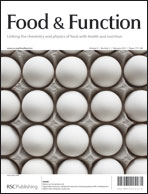(−)-Epigallocatechin-3-O-gallate (EGCg) has been shown to induce endothelium-dependent nitric oxide (NO)-mediated relaxation via the redox-sensitive Src/PI3-kinase/Akt-dependent phosphorylation of endothelial NO synthase (eNOS). Although the presence of 8 hydroxyl functions, mainly on B and D rings, is essential for the EGCg-induced activation of eNOS, the relative role of each individual hydroxyl function still remains unclear. This study examined the effect of selective replacement of hydroxyl functions by methoxy moieties on either the B or D ring on the EGCg-induced phosphorylation of Akt and eNOS, formation of reactive oxygen species (ROS) and NO in cultured coronary artery endothelial cells, and endothelium-dependent relaxation of coronary artery rings. Replacement of a single hydroxyl by the methoxy group on position 3′, 4′ or 4′′ affected little the EGCg-induced phosphorylation of Akt and eNOS, formation of ROS and NO in endothelial cells, and induction of endothelium-dependent relaxations. In contrast, the single methylation at position 3′′ and the double methylation at both positions 3′ and 4′ reduced markedly the phosphorylation of Akt and eNOS, the formation of ROS and NO in endothelial cells and the relaxation of artery rings. These findings suggest that the hydroxyl group at the 3′′ position of the gallate ring is essential and, also, to some extent, the two hydroxyl groups at positions 3′ and 4′, for the EGCg-induced redox-sensitive activation of eNOS leading to the subsequent NO-mediated vascular relaxation.

You have access to this article
 Please wait while we load your content...
Something went wrong. Try again?
Please wait while we load your content...
Something went wrong. Try again?


 Please wait while we load your content...
Please wait while we load your content...